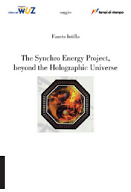
Source:
Science Daily — A large scale STAR experiment is currently under way at Brookhaven National Laboratory, with the Sun Grid Compute Utility from Sun's Network.com delivering large-scale computing power and related resources on a utility basis as the project requires.
An acronym for Solenoidal Tracker At RHIC -- the laboratory's Relativistic Heavy Ion Collider -- STAR tracks the thousands of particles produced by ion collisions at RHIC, searching for signs of something called the quark-gluon plasma (QGP), a form of matter that is believed to have last existed just after the Big Bang, at the dawn of the universe.
The goal of STAR is to bring about a better understanding of the universe in its earliest stages, by making it possible for scientists to better understand the nature of the QGP. The STAR experiment is a massive collaboration of 570 scientists and engineers representing 60 institutions in 12 countries. The STAR detector captures images at a rate of about 100 per second and has accumulated several hundred million images so far in the course of the experiment.
As the size of the collaboration and the scope of its work continue to grow, so does the challenge of having the computing power and data processing resources to carry out that work efficiently.
Due to the computing and data intensive nature of the project, the Sun Grid Compute Utility has become a part of the STAR distributed computing strategy to allows such computations to be done at a faster rate, leaving more time for physicists' to analyze the large datasets.
"A scientist will look at the initial analysis and then go on to look at the details, which requires even larger data samples," explains Jerome Lauret, RHIC/ STAR Software and Computing Project Leader, "so the more scientists that are involved, the greater the scope of the data and dataset challenge."
Sun Grid Compute Utility has proven useful on the computing side of the equation, as a resource for the simulations of design, collisions, and other models that are essential to the research conducted by the experiment's physics working groups.
Sun™ Grid has also supported simulations associated with ongoing research related to upgrades of the STARdetector -- upgrades that will allow further advances in the experimental physics of heavy ion collisions.
Note: This story has been adapted from material provided by Sun Microsystems.
The goal of STAR is to bring about a better understanding of the universe in its earliest stages, by making it possible for scientists to better understand the nature of the QGP. The STAR experiment is a massive collaboration of 570 scientists and engineers representing 60 institutions in 12 countries. The STAR detector captures images at a rate of about 100 per second and has accumulated several hundred million images so far in the course of the experiment.
As the size of the collaboration and the scope of its work continue to grow, so does the challenge of having the computing power and data processing resources to carry out that work efficiently.
Due to the computing and data intensive nature of the project, the Sun Grid Compute Utility has become a part of the STAR distributed computing strategy to allows such computations to be done at a faster rate, leaving more time for physicists' to analyze the large datasets.
"A scientist will look at the initial analysis and then go on to look at the details, which requires even larger data samples," explains Jerome Lauret, RHIC/ STAR Software and Computing Project Leader, "so the more scientists that are involved, the greater the scope of the data and dataset challenge."
Sun Grid Compute Utility has proven useful on the computing side of the equation, as a resource for the simulations of design, collisions, and other models that are essential to the research conducted by the experiment's physics working groups.
Sun™ Grid has also supported simulations associated with ongoing research related to upgrades of the STARdetector -- upgrades that will allow further advances in the experimental physics of heavy ion collisions.
Note: This story has been adapted from material provided by Sun Microsystems.
Fausto Intilla















Nessun commento:
Posta un commento